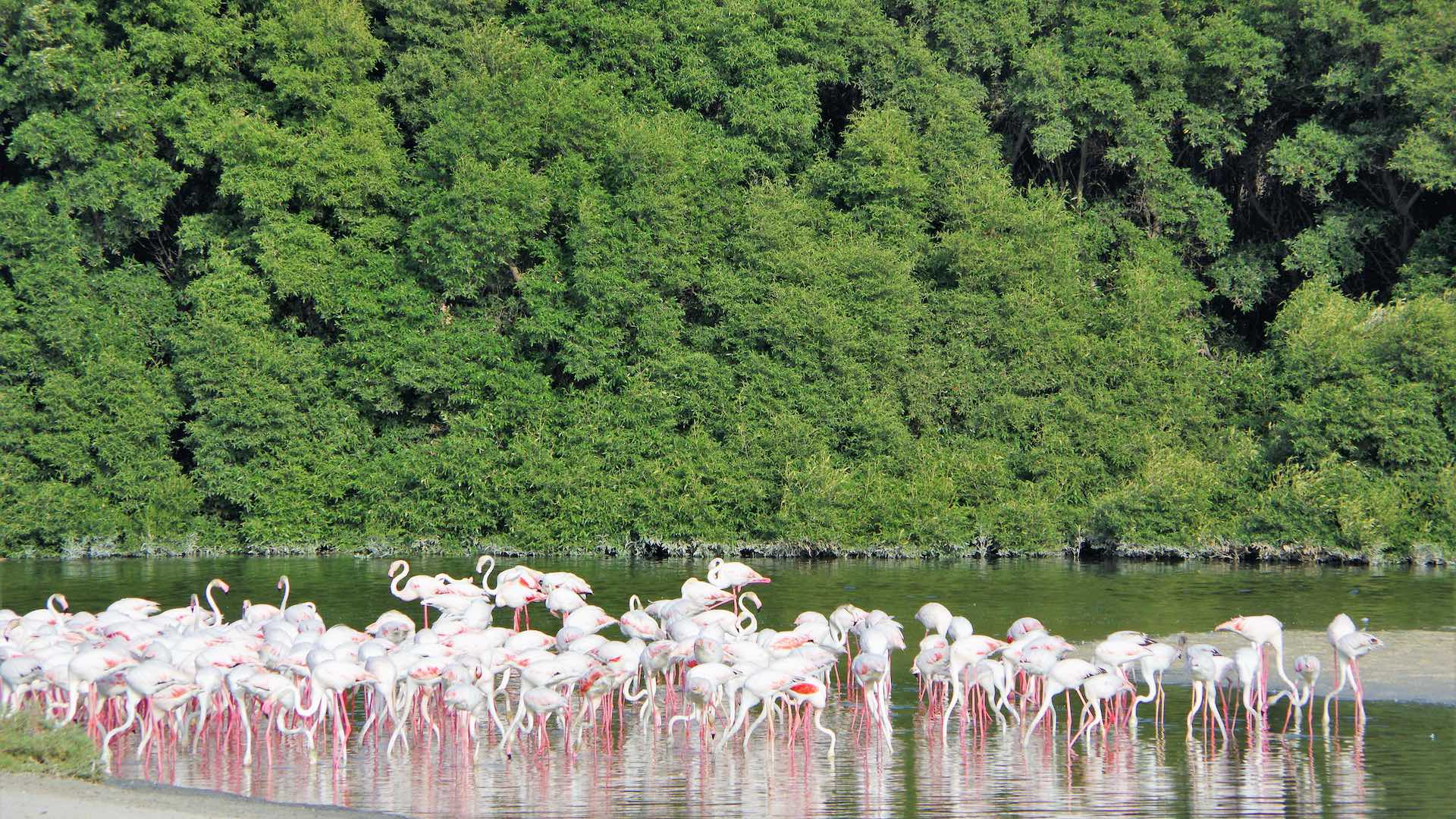Climate Change is a reality.
The 27 Climate Summits (UNFCCC/COPs) took place in Sharm El-Sheikh, with the far-reaching launch of “High Quality Blue Carbon Market Principles and Guidance”, has brought new focus to nature-based solutions. The next COP is to take place in Dubai, November 2023. Whatever these important summits have achieved, human induced climate change is ongoing, especially via CO2 emissions by burning massive amounts of coal, oil, and gas, with its escalating adverse impacts and climate risks related to water-, energy, and food-security, biodiversity and human health.
Climate change and rising seawater
Climate change and rising seawater levels are already changing many of the coastal areas of the world and affecting the living conditions of local populations. This change can go along with an increase or decrease of precipitations, having in consequence a heavy impact on coastal zone management, shore protection, carbon sequestration and accumulation of organic matter in the soil. The production of food, feed, fiber, fuel, and other economic purposes can change irreversibly.
Therefore, it is necessary to monitor ongoing processes and collect reliable scientific data to seek nature-based solutions for a sustainable future.
As part of the international climate debate, it is of the utmost importance to find solutions, and test and apply them, to mitigate climate change, and to make communities world-wide more climate resilient.
It is believed that nature-based solutions will play a critical role. Ecosystems, that are capable of sequestering large amounts of atmospheric and oceanic carbon are of great importance. Because of this importance, a relatively new scientific term has been minted in the recent past ‘Blue Carbon Ecosystems’.
Blue carbon refers to the color of marine and coastal systems, including various types of saline wetlands, such as, for example, semi-subhydric salt marshes, mangroves, and seagrass/seaweed beds, that are periodically or permanently inundated by seawater, and capable of storing large amounts of carbon in their biomass and in water-logged sediments.
The term has been used for a little more than ten years, and no comprehensive definition of the term has been developed and agreed on by the scientific community yet. Other blue carbon ecosystems may include, arguably, macro-algal reefs, kelp forests, phytoplankton, benthic communities, coastal peatland systems, coastal sabkhat and deltaic reedbeds.
What makes the overall picture even more complex is the fact that some of these systems might actually not function as a carbon-sink, depending on topography, environmental conditions, and the type and depth of the host-sediments.
In order to shed light onto the complexity of the sequestration-capacities of these systems, and provide accurate scientific data, it is highly important to differentiate these capacities within and between ecosystems, because a mangrove forest in location A does not equal a mangrove forest in location B. There is an urgent need to synthesize existing scientific information through international efforts, in order to anticipate possible changes and consequences for the well-being of humanity, also in view of carbon-financing.
UNESCO Chairs dealing with the scientific investigation of natural habitats, such as the UNESCO Chair on Education in Biosphere Reserves for Sustainable Societies at the Yokohama National University in Japan, the UNESCO Chair on South-South Cooperation for Sustainable Development in Brazil, the UNESCO Chair on Biodiversity Safeguard for Sustainable Development in Portugal, the Great Sandy Biosphere Reserve in Australia, together with the University of Tokyo, the Nanzan University, the Asia Climate Change Education Center in South-Korea, the International Tropical Timber Organization (ITTO), the Leibniz-Centre for Marine Tropical Research and University of Bremen, the International Society for Mangrove Ecosystems (ISME), the International Society for Halophyte Utilization (ISHU), Saudi ARAMCO, Urban Design Center at Yokohama (UDC-SEA), and supported by JICA and UNESCO, organized a ‘Blue Carbon Forum’ at Yokohama in January 2023.
The forum brought together carbon stakeholders, in presence and online, and will produce a new global scientific book series to be published at the Springer Nature publishing house, called ‘Blue Carbon Ecosystems for Sustainable Development’. The first two volumes are in the making.
The forum findings aim at reaching out to scientists, land-users, politicians, development banks, innovative farmers, investors, energy-producers, and carbon-off-setters from all over the world. The findings of the forum and the new book series will be major scientific contributions for the support of the implementation of the United Nations Sustainable Development Goals especially for advancing blue carbon as part of climate change tools for a better planet. Major attention will be given to UNESCO designated sites, i. e. Natural World Heritage Sites, Biosphere Reserves and Geoparks, of which many are located on islands and in coastal areas. As the problems emanating from climate change and sea-level rise are becoming even more important, islands and coastal areas are the first confronted with these phenomena. Biosphere Reserves and other designated areas implemented by UNESCO are the ideal tools to monitor these changes and to elaborate strategies for mitigating and adapting to these changes, and consequently a direct implementation of the Sustainable Development Goals 2030, the Aichi Targets and the Actions stipulated in the Lima Action Plan for Biosphere Reserves 2016-2025, as well as the recently adopted Global Biodiversity Framework.
Image: Mangroves in Dubai Creek, Benno Böer


